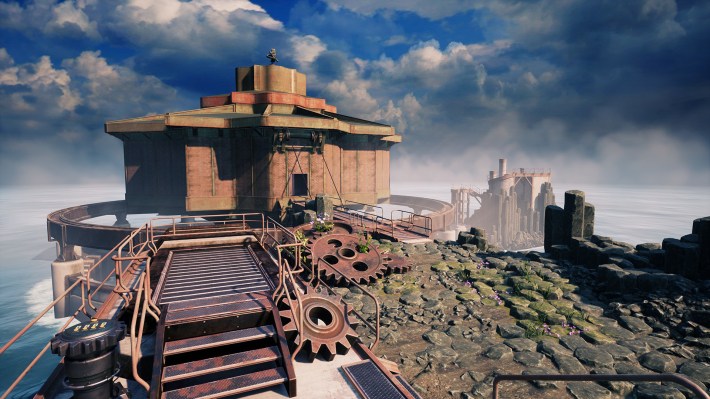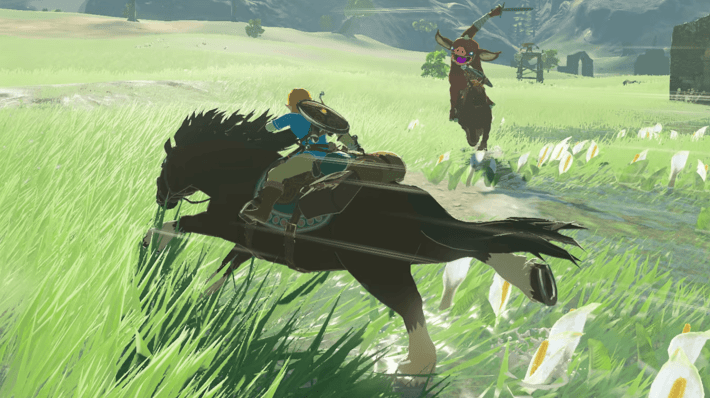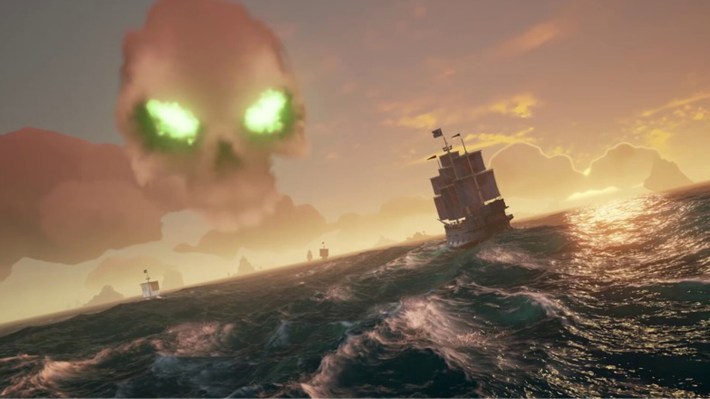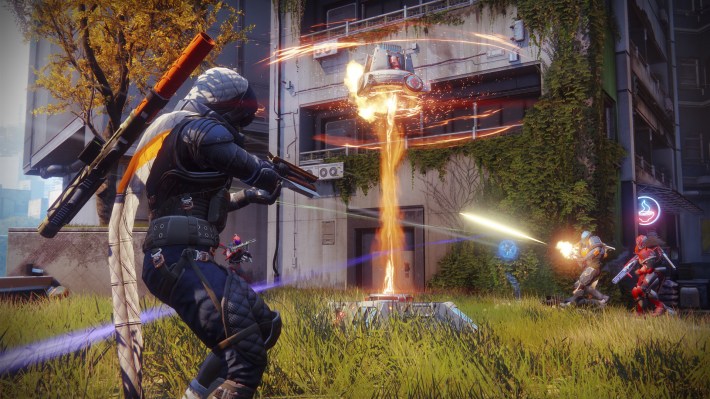For pretty much as long as people have been playing video games, they’ve looked for help with this boss fight or that platforming puzzle. Game guides, whether they’re commercial in nature or produced by fans, naturally arose to meet that demand. As formats have changed, and as outlets have come and gone, demand for guides has remained relatively stable.
However, like many other good things on the internet, the rollout of Google’s AI overviews has thrown this corner of the gaming content landscape into crisis. For every writer who spends dozens of hours working on guides, there are now countless “clankers” working to steal the credit: If you’re stuck in Blue Prince and go looking for help online, there’s a good chance you’ll find the information you’re looking for featured prominently in the search results rather than on the website where it was originally published. More than just petty plagiarism, tech giants like Google and OpenAI are carelessly cannibalizing the value that game guides create for the people who write, publish and read them. And yet, there’s never been a way for guides to exist without a real human somewhere putting in the work.
‘Who are you gonna call?’
Modern game guides might make finding the answers easy but – for as many forms as guides have taken over the years – the reality is that writing them has always been a challenge.
One of the weirder (but wonderful) examples of early guides was the Nintendo Power Hotline. Back in 1987, Nintendo ran what was essentially a highly specialized call center that provided the video game equivalent of customer support to players who needed it. Of course, from its novel inception right up until its end in 2005, the Nintendo Power Hotline only dealt with games that ran on hardware produced by the Japanese game company in question.
If you wanted help for a game that didn’t, your best bet in the late 1990s and early 2000s was a physical strategy guide like the ones compiled and produced by Prima. When it came to professionally produced guides, Prima Games wasn’t the only game in town, but it was widely known in its heyday. Founded in 1990 by Ben Dominitz and PC Games senior editor Rusel DeMaria, the company cranked out a staggering number of strategy guide books over its thirty-year run. (The Prima Games brand still exists today, but primarily as a website that deals in guides and gaming news rather than a publishing imprint.)
Prima Games’ guide books for major games could sell extremely well. Prima’s Myst guide, for example, sold over 1.25 million copies. Not every strategy guide was a bestseller, but those that did hit it big made bank. There was a lot of money to be made if you published a guide for the right game.
I would... work like a dog for two weeks and get all the material I needed to produce the book.
The bulk of the Prima catalogue was written by the same dozen or so writers. Bart Farkas was one member of this content cabal and, by the time all was said and done, he had over a hundred published strategy guides to his name.
Looking back, Farkas remembers less about the games themselves and more about the travel and hours that were involved in producing them. In the present day, video game studios and publishers send game codes in advance to select websites, which publish their reviews and guides according to agreed-upon embargoes. But in the mid-to-late 1990s, game developers didn't typically want to send out advance copies of games to guides writers in this fashion; game publishers also saw the demand for guides as an opportunity to make some money on the side by selling the rights to the guide. And so, guide writers would embed themselves within the studio, playing the game ahead of time on-site. This meant that if Farkas had any questions, he could just walk over to the person in charge of a level or system and ask them.
“I travelled all the time to write these [guides],” Farkas told me. “I was at Nintendo in Redmond, Washington. Rockstar in New York City. Blizzard North in San Fran and Blizzard South in Irvine, California.”
“I would travel and generally [Prima] would pay to put me in a hotel and work like a dog for two weeks and get all the material I needed to produce the book,” he said.
This accelerated timeline often presented some practical issues. Games can change radically throughout the development process, especially during the lead up to launch. It wasn’t uncommon for Farkas to submit a strategy guide only to find that the final version of the game didn’t quite line up with what he had written.
“There’s a tendency for stats to be a little bit wrong because studios will often play-balance right up until the last minute,” Farkas said.

From Prima’s perspective, according to Farkas, an inaccurate guide that shipped on time was always going to be better than an accurate one that didn’t. One of the first things Farkas learned during his time working with the company was the importance of being at the right place at the right time.
“If the book isn’t there on the first day you lose 50% of your potential sales because people just impulse buy,” he said.
While Farkas said the official strategy guide rights for a given game could cost as much as half a million, the most expensive part of the production cost was usually the paper on which the books were printed.
Another business quirk of this era of games guide writing was that it wasn’t uncommon for game publishers to leverage the popularity of their bestselling titles during negotiations with parties like Prima Games. For example, Activision might only agree to sell Prima the rights to publish the official guide for an A-lister like Call of Duty if Prima also agreed to throw in a guide or two for less popular or lucrative titles.
The strategy guide industry’s boom period wouldn’t last forever though. Even at the time, Farkas saw the arrival of online-oriented titles like World of Warcraft as a tipping point for the somewhat precarious niche he was making a living from. Once people started using the internet to play games, it wasn’t long until they started using it to find out information about them. Before long, the writing was on the wall and the best game guides were found on sites like GameFAQs.
”People weren’t buying guides because they could just go online,” he said.
Farkas recalled when one of his game guides was scanned and uploaded in its entirety by a Korean fan. Eventually, the publisher of the game persuaded them to take it down by sending them free swag. Despite that resolution, Farkas couldn’t help but see it as a harbinger of the direction that things were going.
“There are many people out there and there’s always going to be one person who [is going to be] so obsessed with [a game] that they want to write their strategy guide for it — and they’ll do a good job… They’ll work for twenty-four hours a day for four days and get something out there and put a webpage up for it, and whatever they wrote is probably going to be a little bit better in terms of accuracy [than] what a print guide could be,” he admitted.
Fewer page-turners, more page-views
Paul Michael is a perfect example of this phenomenon in action. He’s been writing walkthroughs and guides for GameFAQs and Neoseeker since around 2006. At this point, he’s a veteran in the game guide space, with over 90 guides under his belt. To begin with, though, it was just an extension of the way he approached video games.
“I enjoy playing games and taking notes of certain steps and secrets, so I ended up enjoying the tedious process of taking my time playing while writing walkthroughs or taking notes,” he said.
In a bid to get his name out there, Michael started posting his guides across several different websites. One of these was Neoseeker, where he ultimately became a paid contributor in 2014.
Initially, Michael approached guide writing as more of a hobby. Much of his early work had a lo-fi style, being almost entirely text-based aside from the odd bit of ASCII art. This aesthetic wasn’t a creative choice as much as a function of the technology involved.
“Most guide writers started off with the text-based guides mostly submitted in GameFAQs — one of the oldest and most established gaming platforms out there. They have a character limit and only accept text files, so that formatting style kind of became the standard," he explained.
The issue was that things that used to be tied to cheat codes suddenly turned into micro-transactions or toys-to-life figurines.
While the rise of fan-written guides on the internet was an earthquake for the likes of Prima Games, the tremors of this trend were also felt by those working in the wider world of print media.
When James O’Connor first entered the industry in 2008, guides were already on their way out at gaming magazines aimed at older audiences. However, it was a different story for kids magazines like Mania and K-Zone.
“For Mania — when I started in 2010, the games section had four full pages of cheats and guides. Back then it wasn't too uncommon for games to have cheat codes or passwords, especially games on handheld systems,” O’Connor said.
To fill those pages, O’Connor would scour GameFAQs and other websites for new cheats each month, although he often found himself veering more towards unlock guides as time went on.
“Nintendo games were good because they were putting out a lot of kid-friendly games that had big post-game unlocks, or features that were a bit hidden away. The absolute best, though, were LEGO games — I would get content for months out of those things. So many cheat codes for unlockable characters!”
When the magazines O’Connor worked on inevitably started to downsize their gaming sections, the cheat section was an easy place to cut. It didn’t help that filling those pages had become more and more difficult from the tail-end of the Xbox 360 generation era onwards.

“The issue was that things that used to be tied to cheat codes suddenly turned into micro-transactions or toys-to-life figurines. I remember joking about doing a cheat page for Skylanders, but each character unlock was just ‘go and buy the associated toy,’” he said.
Even so, O’Connor felt like readers appreciated the information included in the section, which helped them get more out of their games. As Farkas predicted, it wasn’t long before he found himself looking to the internet for more than just filling out his slice of the magazine. In the years since his stints at K-Zone and Mania, he’s written more than a few game guides of his own.
The most popular one he ever wrote was an online guide to Eventide Island for The Legend of Zelda: Breath of the Wild, written for a website called New Atlas. O’Connor lucked out in that his agreement with New Atlas would see him paid based on views. As a result, this one guide made him more money than every other one he wrote combined.
From his perspective, there’s a widening gap between the quality of the guide content he has produced in the past and the pages that turn up whenever he goes searching for answers nowadays.
“A combination between the hellscape of SEO and AI algorithms and the fact that every article needs to open with a long explanation of what the game is and a bunch of hyperlinks to different articles means that while we have access to infinite information, making that information profitable means obscuring it a little bit,” he said.
How the SEO-sage gets made
Nowadays, printed game guides have more-or-less entirely been replaced by digital ones. It’s no great secret that these sections are often the most popular and lucrative verticals within major gaming mastheads. But for as much as these guides emulate the utility of their paperbound predecessors, the conditions that underpin their production make for stark contrast.
Dillion Skiffington, a former senior guide editor at Fanbyte, described SEO-friendly guide content as the bread and butter of any modern medium-sized gaming website.
“Short of the major pillars like Kotaku, IGN, and the like where people will come straight to your front page, things like guides are the vast majority of traffic for most small to medium-sized websites,” he said.
While their popularity is constant, the amount of work that goes into a modern game guide can vary widely.
“Some guides are as simple as explaining basic in-game terms that pretty much anyone can find if they look it up in the game. For example, a list of all the new exotic armour pieces in Destiny 2, what they do, and how to get them. That may take just an hour or two. Other guides are much more complicated, like tier lists of all major characters from Genshin Impact, which really requires you to already have deep knowledge of the game, sometimes spanning hundreds of hours.”
Where Farkas’ guides were brought into existence by the whims of publishers and Michael had carte blanche, today’s guide writers sit somewhere in-between those two extremes.
You have to keep up with the games even when you're not actively covering them because people can tell when you've lapsed.
Kerry Palmer, a freelancer who’s produced both written and video guide content for IGN since around 2020, said the appetite for guide content right now is as high as it has ever been. He doesn’t get to choose which games he produces guides for, but he does get to make a lot of them.
“The demand for the work is quite consistent, which I’m thankful for in an industry that has been plagued with layoffs, outlet closures and acquisitions for the last few years,” he said.
In addition to the steady paycheck, the other thing that Palmer enjoys about producing video guides is that he gets to flex all of his different skill sets at once.
“I’ve become better at script writing/editing, video capture, video editing, audio production, voice performance, video review, thumbnail creation and more as part of my work in this field, and I find that very rewarding,” he said.
For Palmer, the initial research process for written and video guides is largely the same, but the rest of the production involves a lot more steps, from recording VO to editing video to creating thumbnails that play nice with a particular video sharing platform. This larger time investment means that not even major outlets have the time or manpower to create a video for every single possible game or topic and that folks like Kerry have to be tactical about where they spend their limited time and effort.
That tension also exists at higher levels of the guide-making process. When it comes to picking and choosing which games are worth writing guides for, former deputy guide editor for Polygon Matthew Reynolds highlighted two factors: popularity and potential.
“The best games have a good mix of both: there being enough features or puzzles that readers will have trouble on, and having plenty of people playing and searching for help,” he said.
Reynolds said you can sometimes spot these key qualifiers ahead of time, while other times the process can be a little more trial and error. Sometimes the work on a given guide begins the minute a project is announced. In some cases, an alpha or beta test might be a good opportunity for an outlet to throw resources at a project and see what sticks.
As you might suspect, Reynolds noted that having access to code early often plays a role in determining which games get guides and which don’t.

“If you can secure early code, it means you’re already publishing guides on release day, and are able to react to trends that you haven’t accounted for much easier. In other words, you aren’t scrambling to catch up.
“For the most popular games, you’ll likely write guides regardless of when you get access - your job is just more difficult if you don’t have early code - but for other titles, it can make the difference in wherever something is covered or not, especially if access lands during a quiet period,” he said.
Both Reynolds and Skiffington cited the rise of live service games as a key driver of change when it comes to how today’s game guides are written.
“Most ‘traditional’ games are one and done - you have a sprint of covering a game, and though you’ll want to tweak it post publish to target other keywords or add new advice, they are generally then left alone to become evergreen guides,” Reynolds said.
In contrast, launch day is just the beginning of the journey for live service titles like Sea of Thieves or Marvel Rivals. As a consequence, December has quickly become one of the busier periods for game guide writers, as the end of the year typically coincides with a slew of holiday-themed updates for live service titles.
“You have to keep up with the games even when you're not actively covering them because people can tell when you've lapsed or don't really care,” Skiffington said.
A labor of love, with an emphasis on the labor
This insider quality is critical to good guide writing but also incredibly difficult to fake. Sometimes, that means guide work tends to be paid better than other kinds of games writing.
“Behind the scenes, I think guides are usually valued correctly. Most people understand that guides usually pay the bills,” Skiffington said.
Unfortunately, this perspective isn’t universal. Lauren Rouse, an ex-guide writer with bylines on Kotaku, GameRant, and The Direct, said that — in her experience — the compensation for guide work often falls short of the work involved.
“Pay rates rarely take into account the behind-the-scenes work involved in writing a guide — you’ll often spend hours playing a game in your own time to then only be paid for the words you put down,” she said, adding that guides have often been looked down on in favor of more prestigious work like reviews or features.
“There is an element of personal value that comes from providing a service like a game guide, but I don’t think the art of guide writing always gets the appreciation it deserves from readers or brands,” she said.
Although Rouse noted that issues around money affect all areas of games journalism, she said that there’s a lot of assumed knowledge that comes with writing guides that deserves fairer compensation.
Of course, money has rarely been the only thing that drives people towards this kind of work. From the days of Farkas’ strategy guides through to modern content mills, the personal satisfaction that those writing guides derive from the work has always been part of the appeal. Guides are explicitly intended to aid players in a way that reviews, interviews or news content aren't. That ideal might be simple, but it’s easy to feel good about. It’s relatively easy to draw the mental line between the work that goes into making a game guide and the impact it’ll have when someone goes searching for the solutions contained within it.

Even as someone who has been working on game guides for almost 20 years, Reynolds still finds the work incredibly satisfying.
“Having your hunches come together or being able to react quickly to what players are interested in - and knowing you’ve helped your audience exactly when they needed it - makes those challenging periods really pay off,” he said.
O’Connor sees modern guides as the media equivalent of quality assurance in game development.
"Guide writers are, fundamentally, heroic, doing tedious work in cursed conditions so that players can enjoy their games more. But getting those straightforward answers to your questions about a game often feels unnecessarily complicated," O'Connor said.
The impact that SEO optimization practices have had on the way guides are structured is the biggest difference between the guides Reynolds worked on when he began his career and the ones he touches nowadays. That said, he doesn’t believe this is necessarily a bad thing.
“I do think it’s better for readers to arrive at the puzzle solution they need quickly than making them scan a huge walkthrough or collection of puzzles, even if it does mean you sometimes cover a game in a more fractured way,” he said.
And for all the ire around how modern guides are structured, there’s a weird parallel to be drawn between the experience they offer and the one you’d associate with flicking through an old school strategy guide or calling up the Nintendo Power Hotline.
Walkthrough writers like Paul Michael usually give some consideration to those who just want to hit CTRL-F and jump straight to the information they’re looking for. Even Bart Farkas would be the first to admit that nobody reads his work like they would a traditional novel or nonfiction book.
“You just turn to the page with the information you need when you need it,” he says.
In a world where the impact of other types of games writing is murky or ambiguous, the value of a good game guide is straightforward and easy to parse. Perhaps that simple utility is why the practice of guide writing has endured.
As the tide of synthetic SEO-optimised slop rises ever higher, it’s hard to guess at what the future of game guides look like. Even so, it’s impossible to imagine a world where game guides are made without the effort, hours and humanity that every incarnation of the craft has embodied in one way or another.


